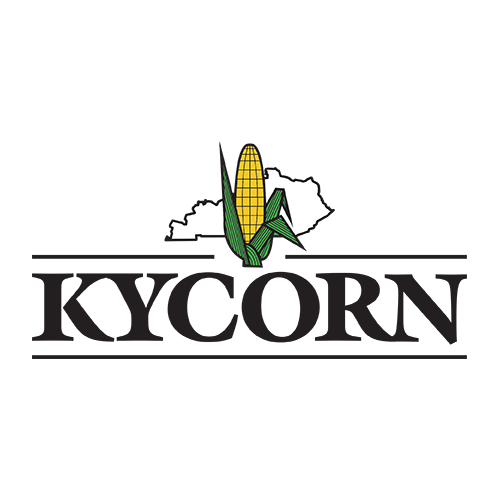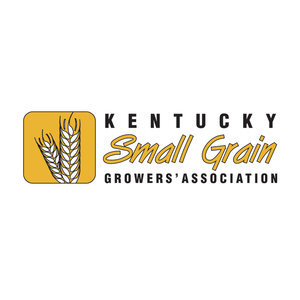There are quite a few forage and grain crops that grow well in Kentucky. Soy, wheat, and corn are important foods for humans and animals, and their by-products are used in many products we use every day. Hay is an important forage for animals that uses more acreage than any other crop in Kentucky! Minor grains and oilseeds like rye, barley, chia, sorghum, and oats round out the state’s versatile forage and grain production.

Rye

Barley

Oats

Sorghum

White corn harvest at Mackey Farm in Hardin Co., Kentucky
Glossary of Terms:
Crop rotation - The practice of growing different crops in the same area in a sequence that helps the plants grow strong.
Pollination - Moving pollen to different parts of the flower to help the flower reproduce. Many grasses, grains, and legumes are either self-pollinating or pollinated by wind.
Mill - A building where workers and machines grind grain into flour.
Miller - Someone who works in a mill.
Enrichment - Adding vitamins or minerals to food to make them even more healthy for humans to eat.
Irrigation - A process farmers use to get water to plants in the field.
Combine - A unique piece of equipment that drives through corn fields and picks up the corn.
Cover crop - Vegetation planted specifically to “rest” a field, replenish soil nutrients, and prevent soil erosion and compaction. Cover crops are usually not consumed by humans but may be planted in succession with food crops for humans or other animals.
Kentucky’s Grain and Forage Organizations
As the advocacy arm of the corn industry, the Kentucky Corn Growers Association is a grassroots organization that works to ensure a pro-corn business and policy environment. The organization empowers corn farmers to elevate their voice in the governmental process.
In order to help small grain growers improve production practices and grow those markets, a group of visionary small grain producers, university personnel, and industry representatives gathered in 1988 to form the Kentucky Small Grain Growers Association (KySGGA).
The Kentucky Soybean Board promotes effective policies and legislation to ensure a growing and profitable soybean industry.
A primary goal of the Grain & Forage Center of Excellence is to help Kentucky farmers feed the world sustainably, protect the environment, expand the Kentucky economy and pass their farms to the next generation.
Established in 1925 the West Kentucky Substation at Princeton has functioned as a center of agricultural activities in western Kentucky. Great advancements have been made in Kentucky's leading industry, Agriculture, with considerable progress being made in improving utilization and conservation of resources, increasing yields of crops and livestock, better management of capital and labor, expanding markets, and finding solutions for problems facing rural people and communities.
Related Articles
Discover the economic and agricultural significance of bourbon distilleries in Kentucky. From driving job creation and tourism to preserving cultural heritage and supporting local farmers, explore how bourbon distilleries play a vital role in the state's economy. Uncover the power of bourbon in shaping Kentucky's identity as the Bourbon Capital of the World.
Laura Knoth serves as the Executive Director for the Kentucky Corn Growers and the Kentucky Small Grain Growers.
How do genetically modified crops affect the environment? TeachKyAg went to GMOanswers.com, a resource widely supported by its partners, to answer this question.
In 2014, the Kentucky General Assembly passed HB 448- an act relating to destruction of crops on farms by wildlife. This bill allowed landowners to kill or trap on their lands any wildlife causing damage to the lands or personal property without a tag.
The latest information from the USDA National Agricultural Statistics Service, Kentucky Field Office notes, “Pasture conditions continue to decline as drought and cool temperatures are stunting regrowth. Grazing has been limited as the grass is brown and dormant. Many farmers have been feeding hay for a month at this point and concern is growing for winter hay stocks.”
Products made from soybeans touch everyday life in countless ways, though often behind the scenes.
Growers in the region surrounding Pulaski County will have an outlet much closer to home thanks to Continental Refining Company (CRC). The company is in the process of bringing a soybean crushing operation into its refining facility in Somerset providing a valuable outlet for the region's soybean crops and much-needed relief for producers who have been absorbing those increased fuel costs.
U.S. Senate Republican Leader Mitch McConnell paid a visit to Graves County recently to discuss the distribution of $20 million of USDA funding to build temporary grain storage facilities in areas affected by last year’s tornadoes. West Kentucky grain producers were especially affected facing uncertainty about storage for their 2022 crops.
As Barry Alexander drives a tractor across a soybean field on Cundiff Farms, his eyes are on a computer screen that shows his precise location, the speed of the tractor, exactly how much seed is being planted per acre and more. He can watch the screen closely because the tractor uses autosteer to move across the field in a straight line.
Gene editing is a technology that’s making headlines for the variety of ways it can be used to improve food and benefit the environment. This is an especially exciting time as scientists are seeing their research applied in the field, leading to food that is healthier, better quality and more sustainably produced.
There is hidden treasure in the city of Horse Cave, Kentucky, but one doesn’t have to go caving in order to find it. A trip to your local grocery store or even a number of chain restaurants will put you in contact with what may be Hart County’s best kept secret – the T. Marzetti Company.
A new seed lubricant made from soybeans replaces graphite and talc.
An idea that started with the curiosity of an enterprising south-central Kentucky farmer is showing promise as another crop for Kentucky small grain producers, as well as a reliable source of Kentucky-grown cereal rye for bourbon distillers, bakers and millers.
Like generations of Kentucky producers, Hodgenvile farmer Ryan Bivens, '01, has relied on UK CAFE experts to help him make unbiased decisions to improve his grain operation. He sees the Grain and Forage Center of Excellence as an important way UK can help producers solve new challenges.
Findings from a University of Kentucky student’s undergraduate research experience could help farmers control one of their most troublesome pests.
Thanks to the Kentucky Grain Insurance Fund, grain farmers across the Commonwealth are protected against the nancial failure of grain elevators and other licensed businesses that buy or store their grain in Kentucky.
With roughly two percent of the population feeding the remainder, the need for farms ectors to work together on a variety of policy issues is critical for the survival and success of American agriculture.
Did you know that the wheat grown in Kentucky makes excellent pancakes? Kentucky farmers grow soft red winter wheat, which is used most often in cookies, crackers, flatbreads and baking mixes (including pancakes).
There are three types of corn grown in Kentucky: field corn, popcorn, and sweet corn.
Field corn is the most popular type of corn grown by our farmers since it can be used for livestock feed, ground into meal and flour for human food, distilled into alcohol (fuel and beverage), or processed to be used in thousands of products.




























